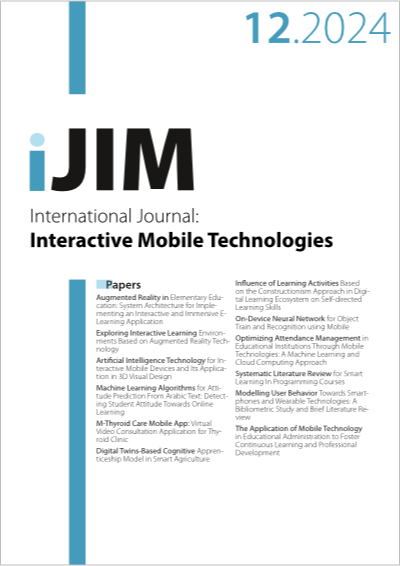Influence of Learning Activities Based on the Constructionism Approach in Digital Learning Ecosystem on Self-directed Learning Skills
DOI:
https://doi.org/10.3991/ijim.v18i12.48401Keywords:
self-directed learning, Constructionism, digital learning ecosystemAbstract
Due to the advancement of digital technology in the 21st century, self-directed learning (SDL) skills have become crucial for learning in the digital era, which is characterized by rapid change. Most previous studies have focused on enhancing SDL skills through various instructional methods. Today, technology plays a crucial role in learning. In the current context, exploring the outcomes of incorporating digital technology in teaching methods to enhance SDL skills is an intriguing subject. This study investigated the impact of SDL skills and learning achievement promotion by employing learning activities based on the constructionism approach in a digital learning ecosystem (DLE). The study used a quasi-experimental research approach with a non-equivalent pre-test and post-test control group design. The participants were eleventh-grade students. The results showed that both the SDL skills and learning achievement of the experimental group increased more compared to those of the control group. Based on the findings of this study, it can be concluded that learning-by-marking within an environment where numerous digital technologies serve as learning tools has a positive impact on SDL skills and learning achievement.
Downloads
Published
How to Cite
Issue
Section
License
Copyright (c) 2024 Somsak Techakosit, Mr. Teerapop Rukngam

This work is licensed under a Creative Commons Attribution 4.0 International License.



